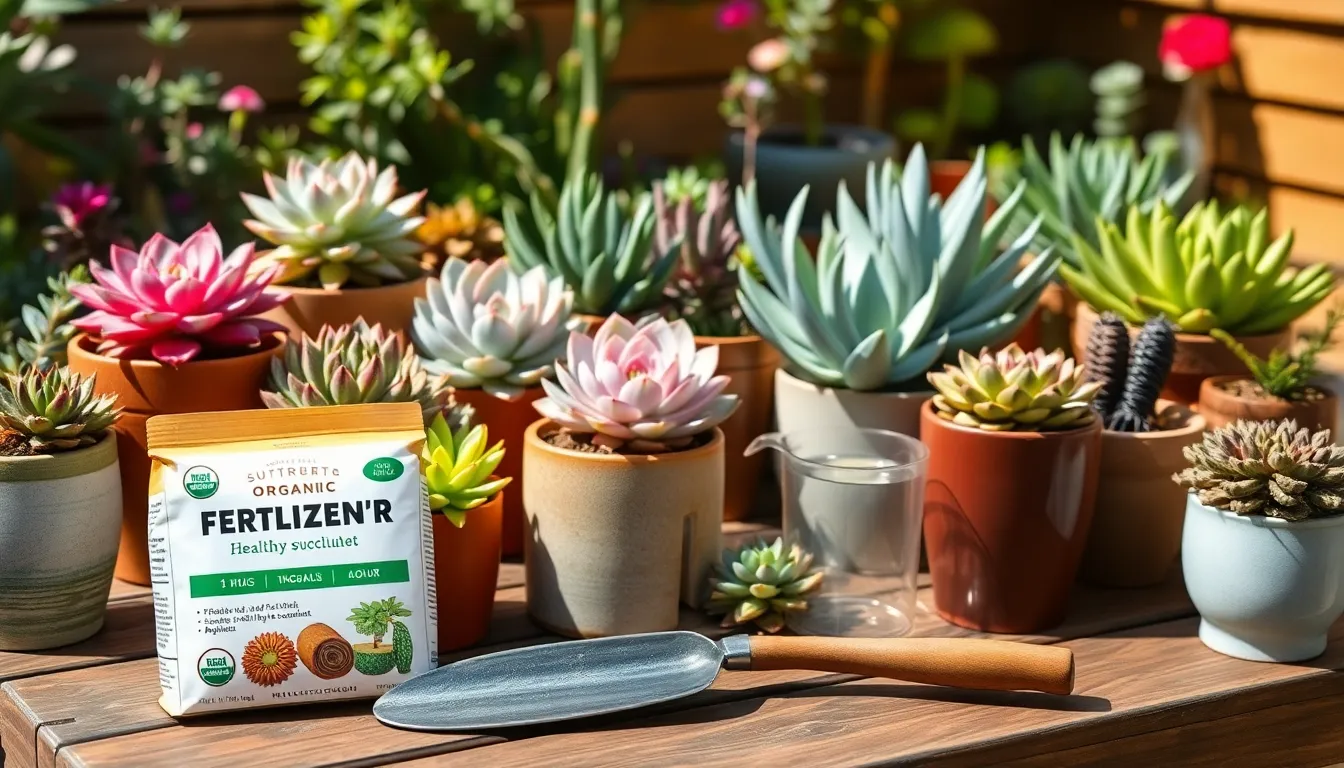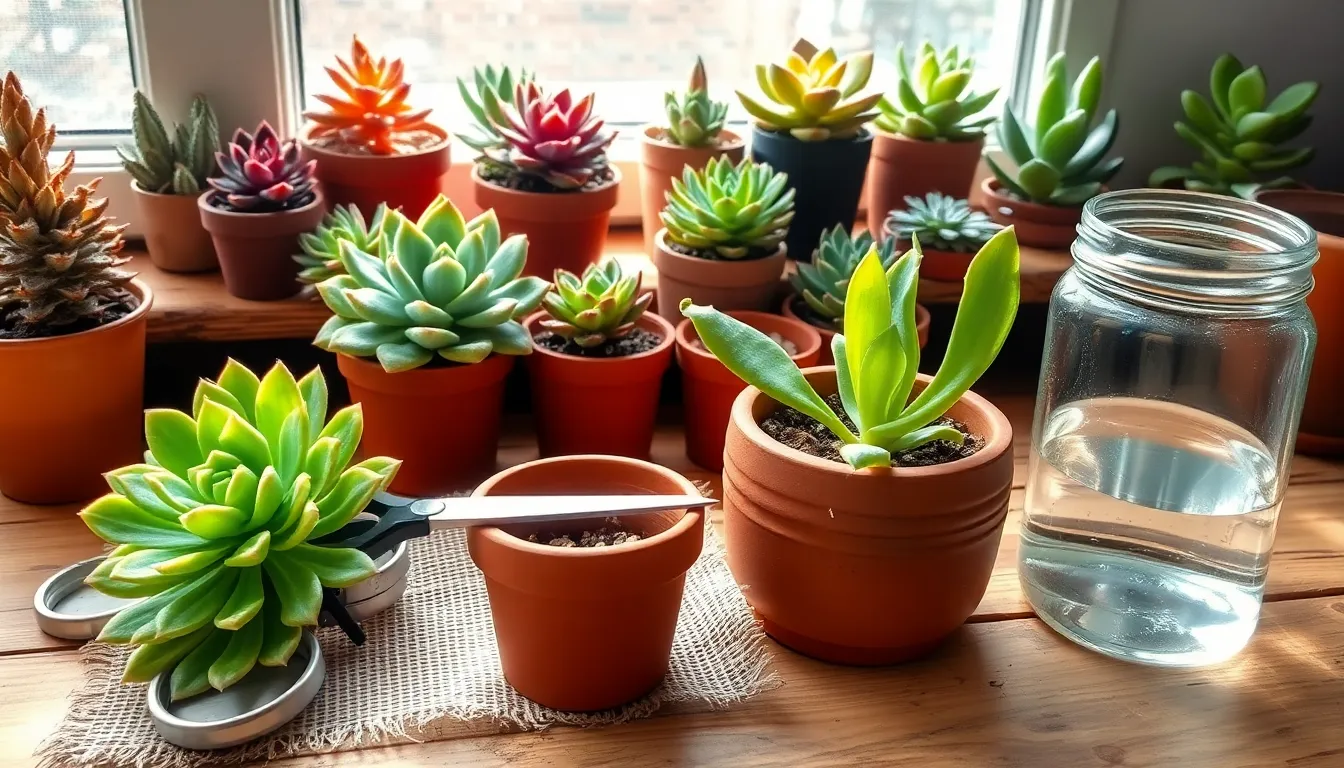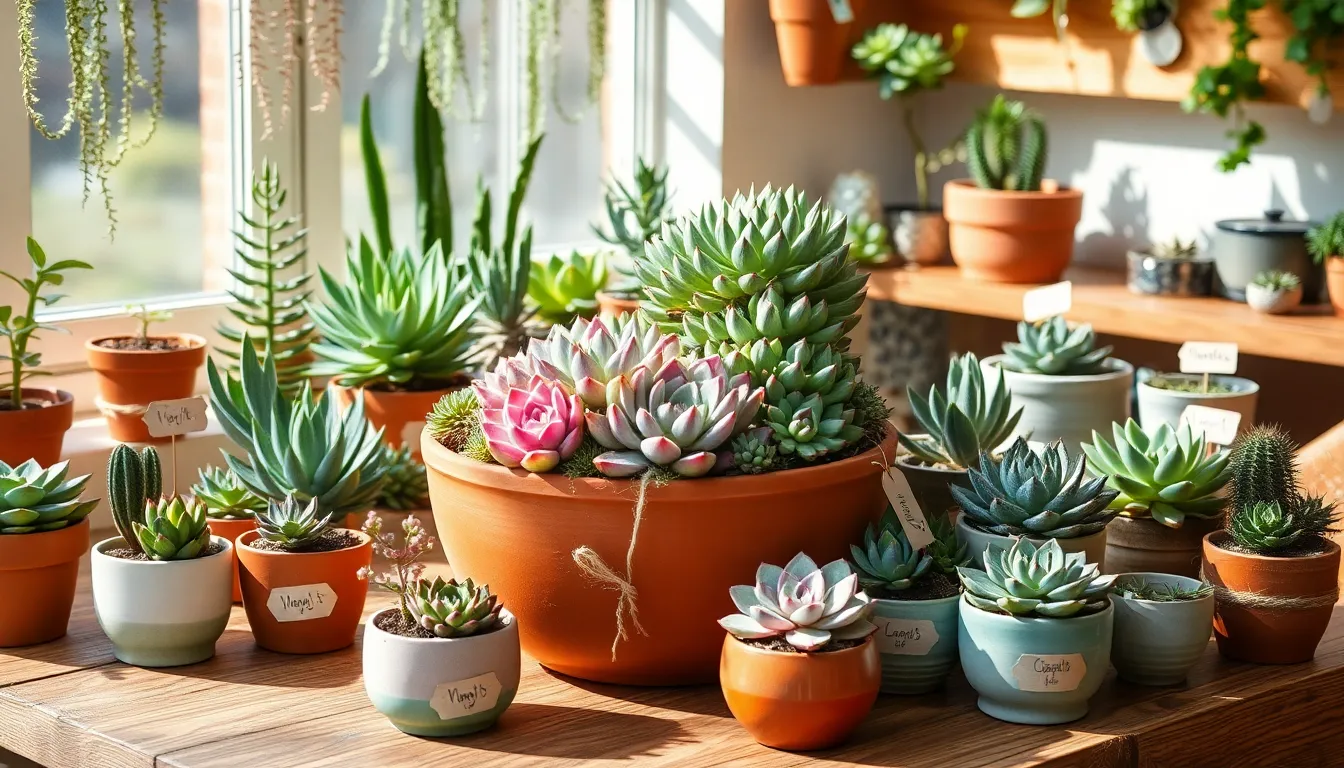Welcome to the delightful world of succulents, where unique forms and vibrant colors promise to captivate both novice and seasoned gardeners alike. Whether you’re just starting your green journey or have years of experience, our guide to the “Top 14 Succulents for Every Season” is your key to transforming any space into a thriving oasis of low-maintenance beauty.
In this carefully curated list, you’ll discover succulents that not only survive but thrive throughout the year, offering resilience and charm in equal measure. Each chosen plant is an embodiment of nature’s adaptability, ensuring you can enjoy lush greenery and fascinating textures no matter the season.
Packed with practical tips and insights, this guide empowers you to confidently cultivate these remarkable plants, enhancing both your garden’s aesthetic and your gardening skills. Get ready to experience the joy and satisfaction of watching your succulents flourish, bringing a sense of accomplishment and serenity to your gardening endeavors.
Echeveria ‘Lola’ (Echeveria lilacina)

Echeveria ‘Lola’, also known as Echeveria lilacina, is a stunning succulent with a rosette of delicate, pale lilac leaves. This plant is a favorite among gardeners for its unique color and striking form, making it a standout choice in any succulent collection.
To ensure your Echeveria ‘Lola’ thrives, plant it in a well-draining soil mix, such as a cactus or succulent potting mix. This helps prevent root rot, a common issue with succulents when left in soggy soil.
During the growing season, typically spring and summer, water your Echeveria ‘Lola’ thoroughly but allow the soil to dry out completely between waterings. In the winter months, reduce watering to mimic its natural dormancy cycle, which will help maintain its vibrant appearance.
For those looking to enhance their Echeveria care, consider adding a layer of gravel or stones on top of the soil to promote quick drainage and prevent moisture accumulation near the plant’s base. Additionally, place your Echeveria ‘Lola’ in a location that receives plenty of bright, indirect sunlight to encourage the best growth and coloration. With these straightforward care tips, your Echeveria ‘Lola’ will not only survive but thrive, bringing beauty to your indoor or outdoor garden space.
Burro’s Tail (Sedum morganianum)

Burro’s Tail, also known as Sedum morganianum, is a captivating succulent that thrives in hanging baskets. Its trailing stems can grow up to three feet long, making it a stunning visual addition to any collection.
For optimal growth, place your Burro’s Tail in a location with bright, indirect light. Direct sunlight can cause the leaves to scorch, so a spot near an east or north-facing window is ideal.
When it comes to watering, this succulent prefers to dry out completely between waterings. During the growing season, water it every two weeks, and reduce watering to once a month in the winter.
Use a well-draining cactus or succulent soil mix to prevent root rot. Consider adding extra perlite or sand to enhance drainage if your mix is too dense.
- Fertilize sparingly with a balanced, diluted liquid fertilizer during the growing season.
- Handle with care, as the leaves are delicate and can easily fall off when touched.
- To propagate, gently remove a few leaves, let them dry for a week, and then place them on moist soil to root.
With its unique appearance and straightforward care requirements, Burro’s Tail is an excellent choice for both novice and seasoned gardeners. Embrace its trailing beauty and watch it transform your space into a lush, hanging garden.
String of Pearls (Senecio rowleyanus)

The String of Pearls (Senecio rowleyanus) is a striking succulent known for its unique bead-like foliage. It thrives in bright, indirect light, making it an excellent choice for a sunny windowsill indoors.
For optimal growth, plant your String of Pearls in a well-draining cactus or succulent soil mix. Ensure the pot has drainage holes to prevent waterlogging, which can lead to root rot.
Watering requires a careful balance—allow the soil to dry out completely between waterings to mimic its arid natural habitat. During the growing season in spring and summer, water about once every two weeks, while in winter, reduce watering to once a month.
Advanced gardeners can propagate String of Pearls easily through stem cuttings. Simply cut a few inches of the stem, allow it to dry for a day, and then plant the cutting in moist soil to encourage root development.
Panda Plant (Kalanchoe tomentosa)
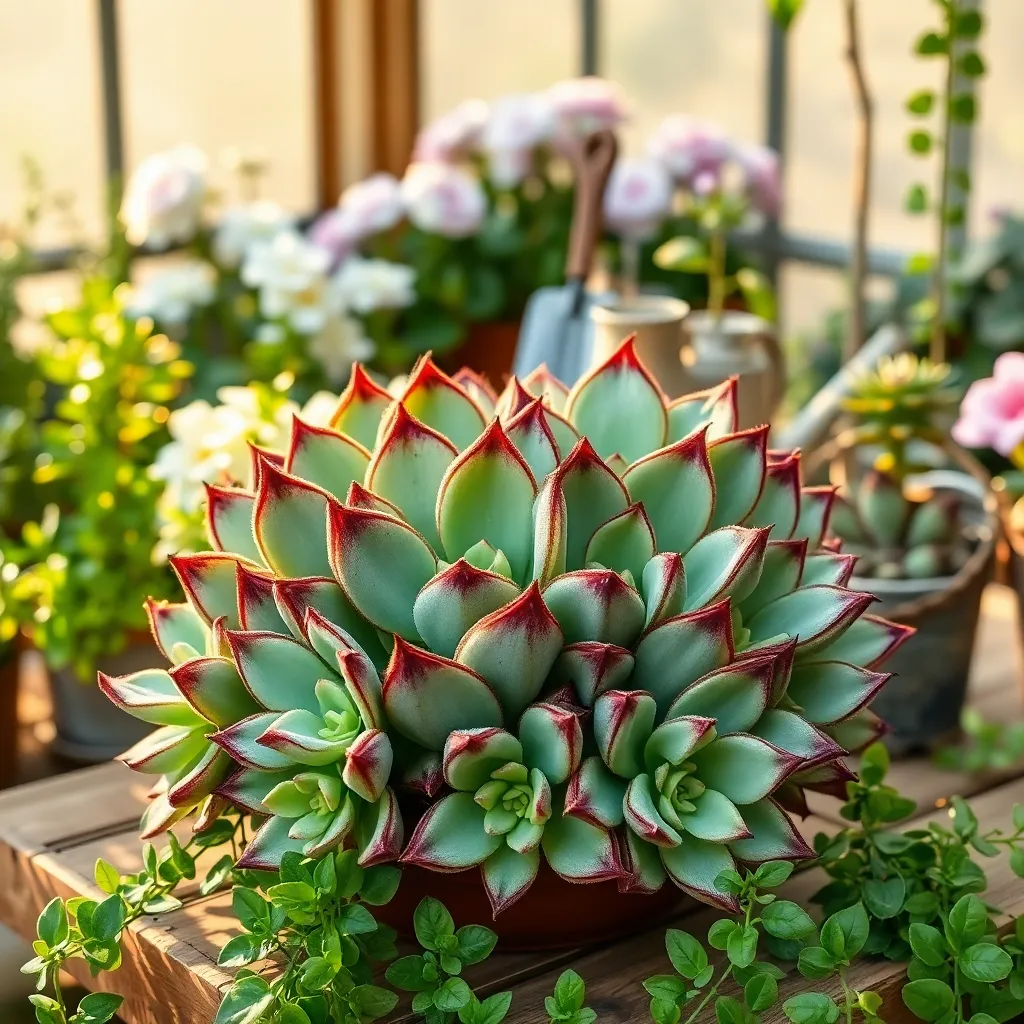
Panda Plant, scientifically known as Kalanchoe tomentosa, is a delightful succulent that adds a touch of whimsy to any garden. Its soft, fuzzy leaves with distinct brown edges make it a popular choice for both indoor and outdoor settings.
When caring for a Panda Plant, it’s essential to provide it with well-draining soil, as excess moisture can lead to root rot. A cactus or succulent mix is ideal, and you can enhance drainage further by adding perlite or coarse sand.
**Watering** should be done sparingly, allowing the soil to dry out completely between waterings. During the growing season, water every 2-3 weeks, and reduce frequency in the winter when the plant is dormant.
**Lighting** is crucial for the Panda Plant’s health, and it thrives in bright, indirect sunlight. If indoors, place it near a sunny window, but avoid direct sunlight, which can scorch its leaves.
For advanced gardeners, consider **propagating** your Panda Plant by gently removing leaf cuttings and allowing them to callous over before planting. This succulent not only adds beauty but also offers a wonderful opportunity to expand your collection through propagation.
Aloe Vera (Aloe barbadensis miller)
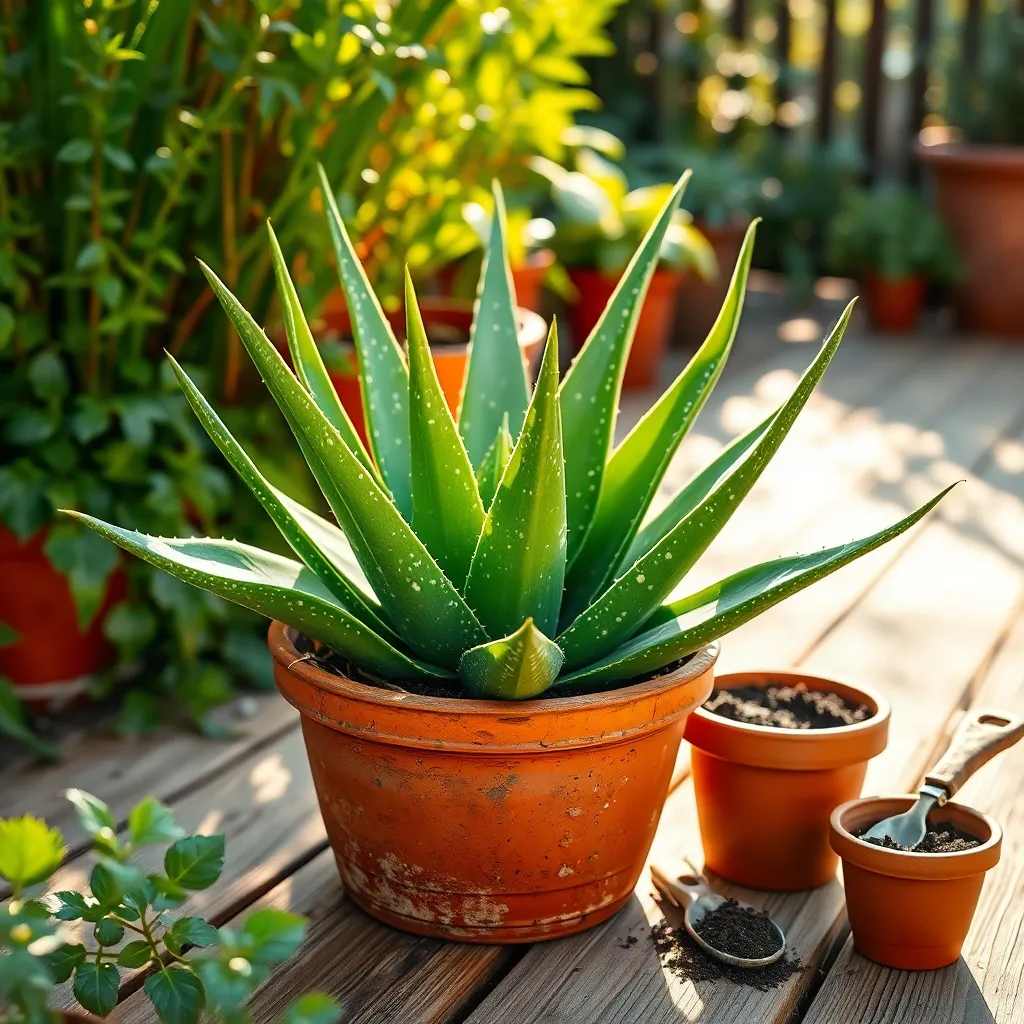

Aloe Vera, known for its healing properties, is also an incredibly easy plant to care for. It thrives in well-draining soil, such as a cactus or succulent mix, which prevents root rot.
Ensure your Aloe Vera receives plenty of bright, indirect sunlight to keep it healthy and thriving. If placed outdoors, bring it inside during colder months to protect it from frost damage.
Watering should be done sparingly; allow the soil to dry out completely between waterings. Overwatering is a common mistake, so it’s crucial to let the soil dictate when it’s time to water.
For advanced gardeners, consider propagating Aloe Vera by removing offsets or “pups” that grow at the base of the plant. Simply pot these pups in their own containers with the same well-draining soil to expand your Aloe collection effortlessly.
Snake Plant (Sansevieria trifasciata)

Known for its resilience, the Snake Plant (Sansevieria trifasciata) is a popular choice for both beginner and seasoned gardeners. This hardy succulent thrives in a variety of light conditions, from low light to bright, indirect sunlight, making it a versatile addition to any indoor space.
To ensure your Snake Plant remains healthy, use a well-draining potting mix, such as a cactus or succulent blend. Overwatering is the most common mistake with these plants; it’s best to let the soil dry out completely between waterings to prevent root rot.
For optimal growth, place your Snake Plant in a pot with a drainage hole to allow excess water to escape easily. Fertilize sparingly during the growing season with a balanced, water-soluble fertilizer, applying it once every couple of months to promote steady growth.
Advanced gardeners can experiment with propagation by dividing the rhizomes or using leaf cuttings. This plant not only adds aesthetic value but also improves indoor air quality by filtering out toxins, making it a beneficial addition to your home environment.
Lithops ‘Living Stones’ (Lithops aucampiae)

Lithops aucampiae, commonly known as “Living Stones,” are fascinating succulents that mimic the appearance of small stones. This adaptation helps them survive in their native habitat of arid landscapes by blending into the surrounding environment.
To successfully grow Lithops, provide them with a gritty, well-draining soil mix such as a cactus blend or a combination of sand and perlite. Ensure they receive plenty of bright, indirect sunlight to mimic their natural conditions and promote healthy growth.
Water Lithops sparingly, as they are highly susceptible to rot. A good rule of thumb is to water them once every two to three weeks during their active growing season in the spring and fall.
Advanced gardeners can experiment with timing their watering to the plant’s natural growth cycle, allowing the soil to dry out completely between waterings. For beginners, it’s essential to remember that overwatering is the most common mistake with Lithops, so erring on the side of underwatering can be beneficial.
Christmas Cactus (Schlumbergera bridgesii)
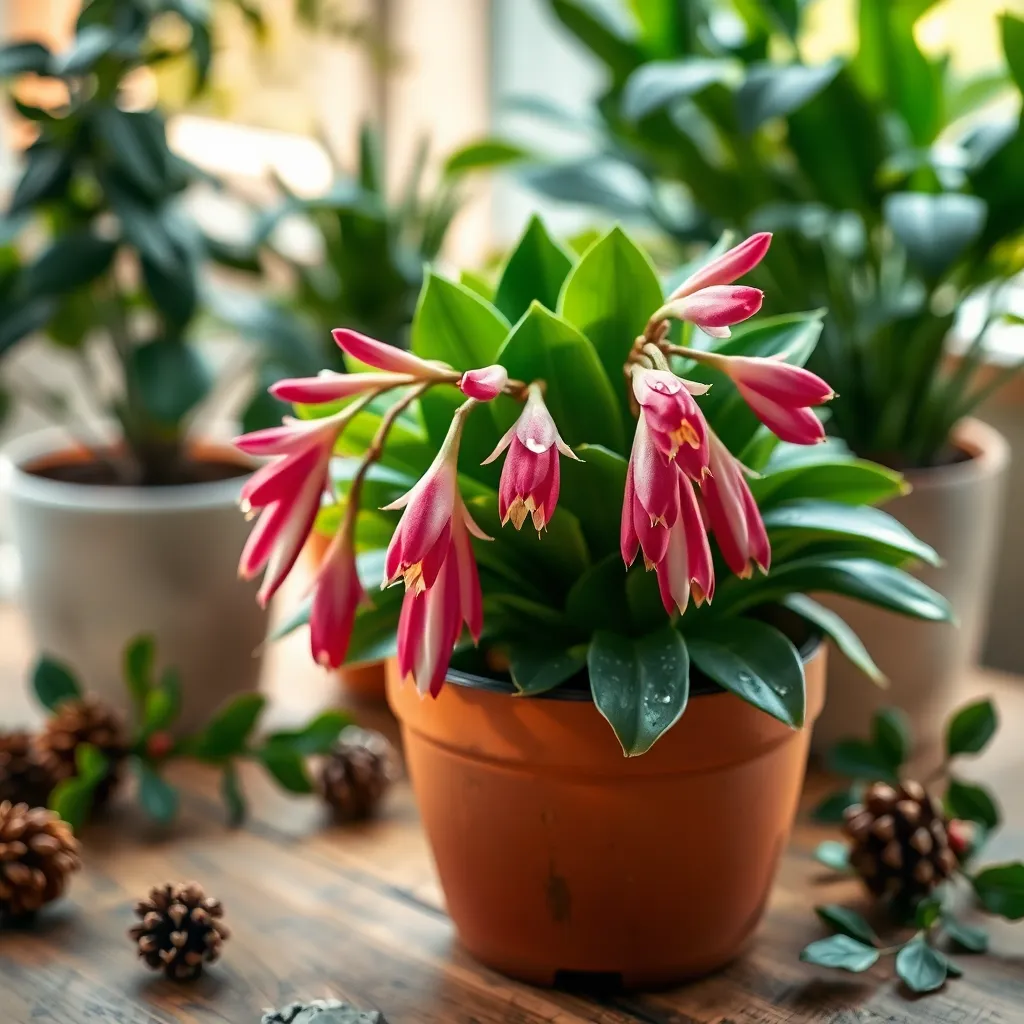
The Christmas Cactus (Schlumbergera bridgesii) is a delightful addition to any indoor garden, known for its vibrant blooms during the holiday season. This succulent thrives in indirect sunlight and prefers a humid environment, making it perfect for indoor placement near a bright window.
To ensure your Christmas Cactus blooms beautifully, maintain a consistent watering schedule. Water the plant thoroughly when the top inch of soil feels dry, but be cautious not to overwater as this can lead to root rot.
For optimal growth, it is essential to use a well-draining soil mix, such as a combination of potting soil and perlite or sand. This succulent benefits from being repotted every couple of years to provide fresh nutrients and space for root expansion.
Advanced gardeners can encourage more prolific blooming by exposing the plant to cooler temperatures, around 50-55°F (10-13°C), for several weeks in the fall. Additionally, ensure the plant receives 12-14 hours of uninterrupted darkness each night during this period to stimulate bud formation.
Crown of Thorns (Euphorbia milii)
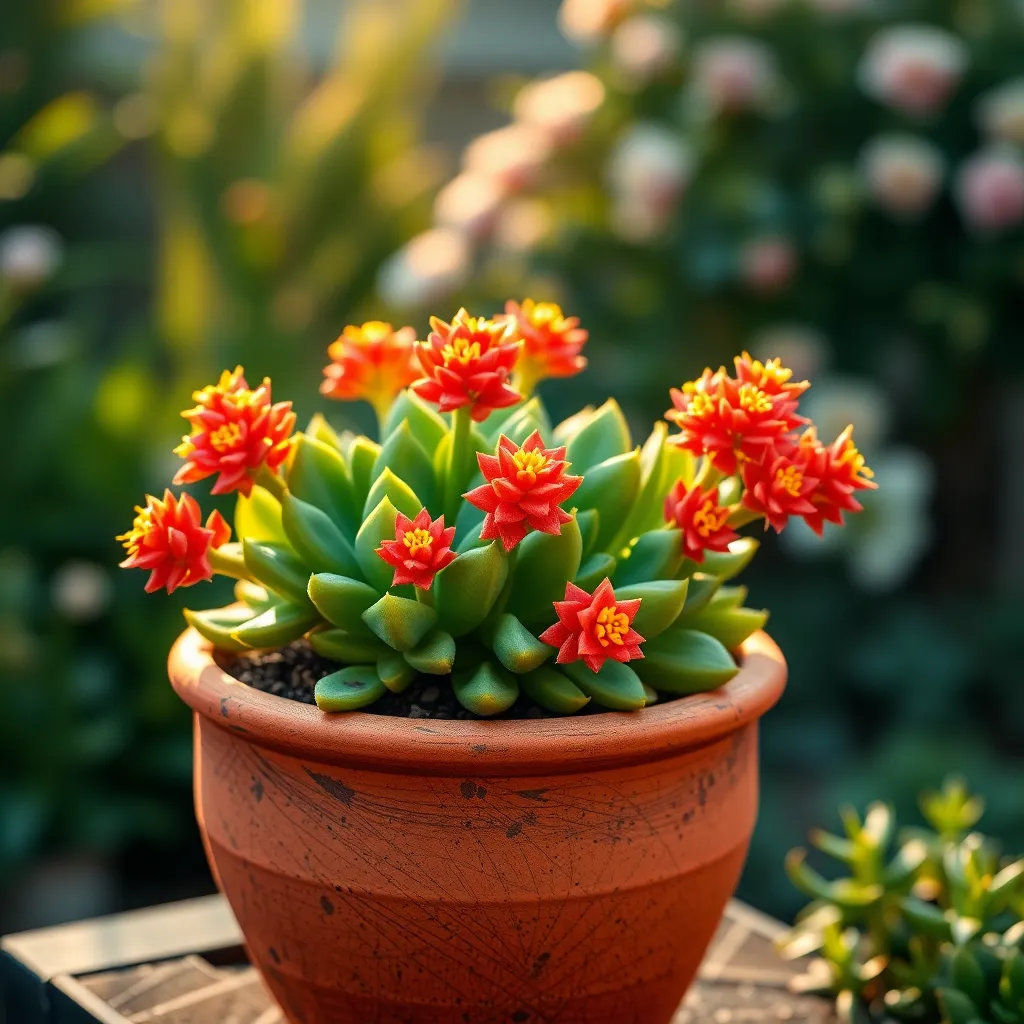
The Crown of Thorns (Euphorbia milii) is a fascinating succulent known for its vibrant blooms and thorny stems. It’s a hardy plant that thrives in a range of conditions, making it ideal for both beginners and experienced gardeners.
For optimal growth, place your Crown of Thorns in a spot where it can receive bright, indirect sunlight for at least six hours a day. If grown indoors, a south or west-facing window is perfect, while outdoor plants will flourish in partial shade.
When it comes to watering, allow the soil to dry out completely between waterings to prevent root rot. A well-draining cactus or succulent mix is best, enriched with sand or perlite to enhance drainage.
Advanced gardeners may consider pruning their Crown of Thorns to encourage bushier growth and more blooms. Always wear gloves when handling the plant, as its sap can be irritating to the skin and eyes.
Cobweb Houseleek (Sempervivum arachnoideum)

The Cobweb Houseleek, or Sempervivum arachnoideum, is a charming succulent that earns its name from the fine, cobweb-like fibers that cover its rosettes. This unique feature makes it a visually stunning addition to any succulent collection, and it’s especially appealing for gardeners looking to add texture and interest to their arrangements.
To thrive, Cobweb Houseleeks require well-draining soil, such as a cactus or succulent mix, which prevents root rot. Position them in a spot where they receive at least 4 to 6 hours of direct sunlight daily to maintain their vibrant colors and compact rosette form.
Watering should be done sparingly; allow the soil to dry out completely between waterings to mimic their natural alpine habitat. During the winter months, reduce watering further, as the plant enters a dormant state and requires even less moisture.
For those looking to propagate, Cobweb Houseleeks are incredibly easy to multiply. Simply detach offsets from the mother plant in spring or summer, and replant them in a similar well-draining soil mix to establish new colonies effortlessly.
Blue Chalksticks (Senecio serpens)
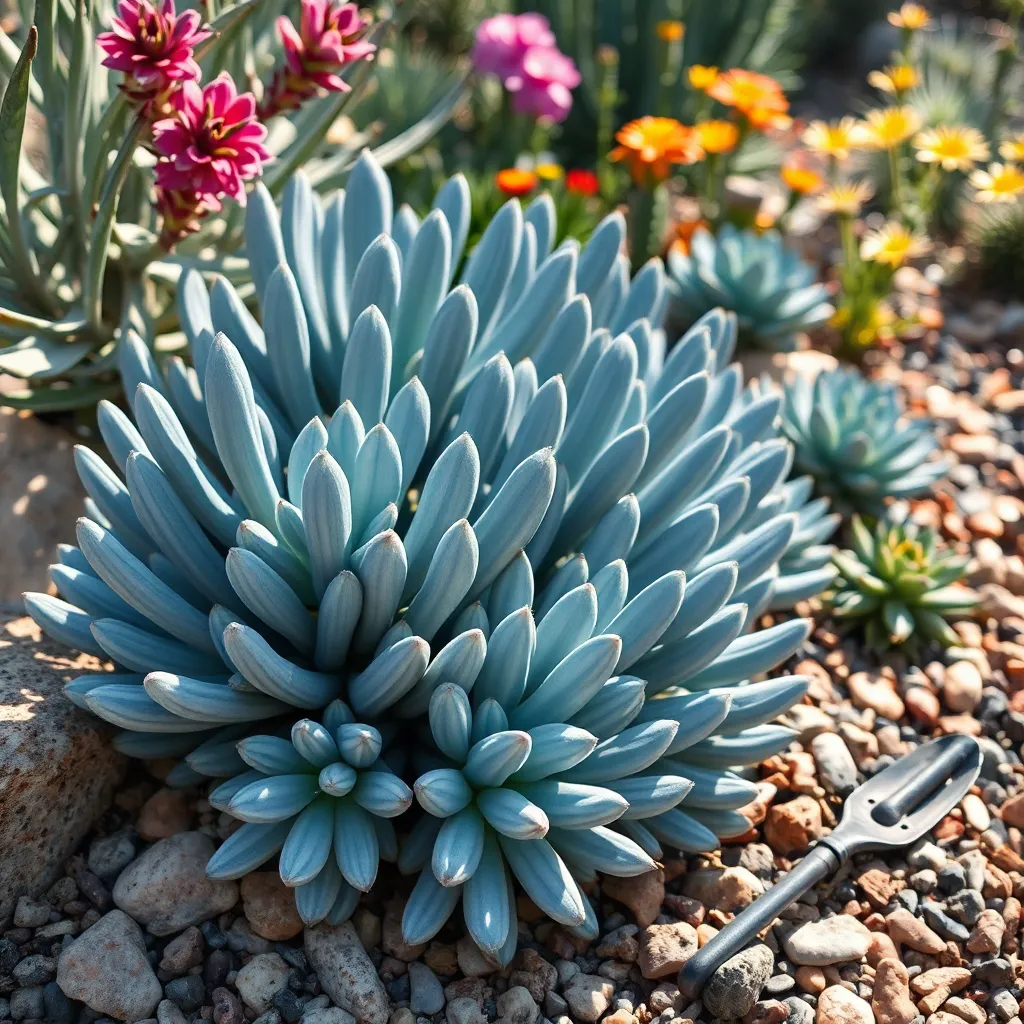
Blue Chalksticks (Senecio serpens) are a delightful addition to any succulent collection, known for their striking blue-gray foliage. These hardy plants thrive in well-draining soil, making them perfect for rock gardens or container arrangements.
To ensure optimal growth, position your Blue Chalksticks in a location that receives full sun to partial shade. In regions with intense heat, providing afternoon shade can help prevent leaf burn and maintain the plant’s vibrant color.
Avoid overwatering by allowing the soil to dry out completely between watering sessions, typically watering every two to three weeks. During the winter months, reduce watering frequency as the plant enters a dormant phase, requiring less hydration.
For gardeners looking to propagate, Blue Chalksticks can be easily propagated from stem cuttings. Simply cut a healthy stem, let it callous for a few days, and plant it in a sandy, well-draining soil mix to encourage root development.
Flapjack Plant (Kalanchoe thyrsiflora)

The Flapjack Plant, also known as Kalanchoe thyrsiflora, is a striking succulent with paddle-shaped leaves that bring a unique texture to any garden. Its leaves often exhibit a vibrant red edge under bright sunlight, adding an eye-catching pop of color.
This succulent thrives in warm, sunny locations, making it perfect for windowsills or outdoor spots with full sun exposure. Ensure the plant is potted in a well-draining cactus or succulent mix to prevent root rot, a common issue in overly damp conditions.
Watering should be done sparingly, as the Flapjack Plant prefers a dry environment. A good rule of thumb is to water only when the top inch of soil feels dry to the touch, typically once every two weeks.
For those looking to propagate, this plant can be easily grown from leaf cuttings. Simply allow the cut ends to callous over for a few days before placing them in soil, ensuring each cutting gets ample sunlight for successful rooting.
Tiger Tooth Aloe (Aloe juvenna)
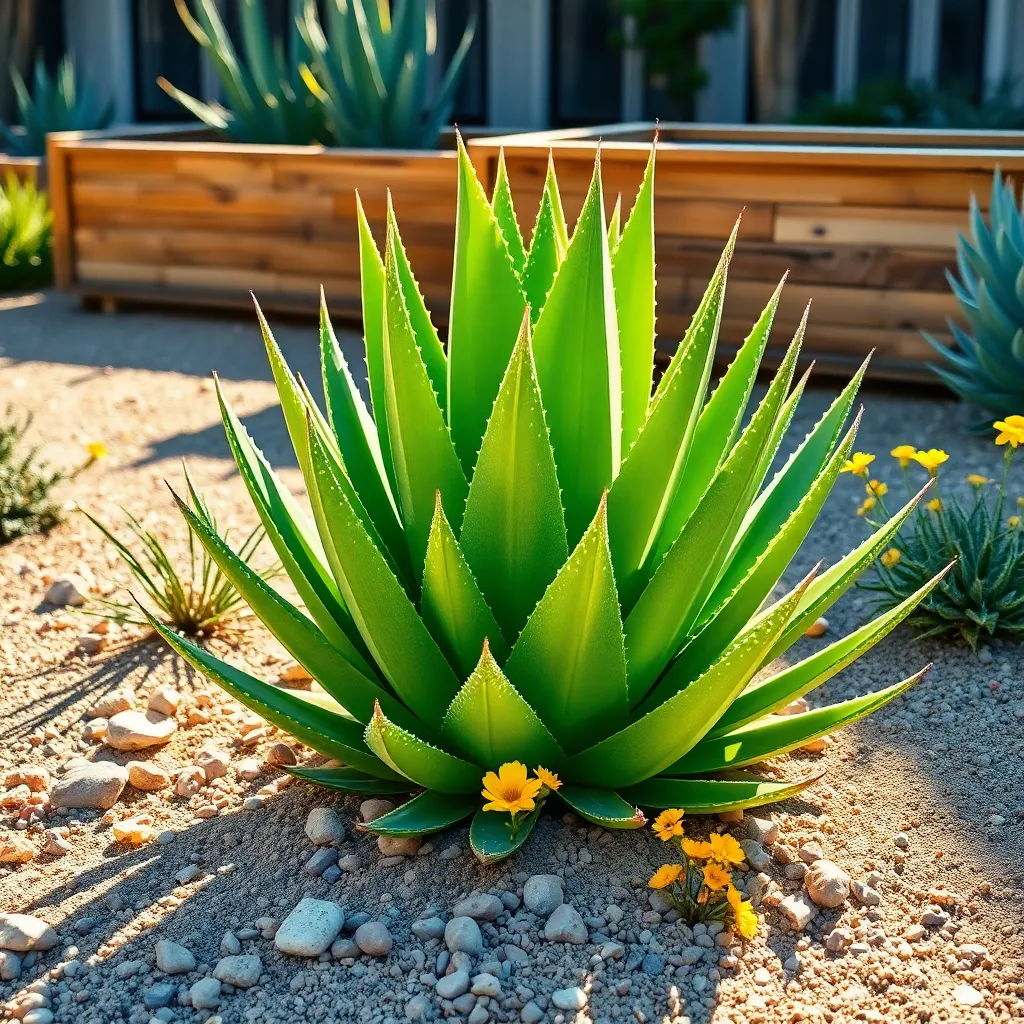
The Tiger Tooth Aloe (Aloe juvenna) is a charming succulent known for its compact rosettes and distinctive tooth-like spines. This plant is perfect for those who have limited space, as it remains relatively small, making it ideal for container gardens or windowsills.
To cultivate a healthy Tiger Tooth Aloe, start with a well-draining potting mix, such as a blend of cactus soil and perlite. Position the plant in a spot that receives bright, indirect sunlight, as too much direct sun can scorch its leaves.
Watering is crucial for the Tiger Tooth Aloe’s success; allow the soil to dry out completely between waterings to prevent root rot. In warmer months, this might mean watering every two weeks, while in cooler months, once a month may suffice.
For experienced gardeners looking to propagate, consider taking offsets from the base of mature plants. Simply allow the offsets to dry for a day before planting them in fresh soil, ensuring they establish roots quickly and robustly.
String of Hearts (Ceropegia woodii)

The String of Hearts (Ceropegia woodii) is a charming, trailing succulent known for its delicate, heart-shaped leaves. This plant thrives best in bright, indirect light, making it perfect for a sunny windowsill or a well-lit room.
For optimal growth, plant your String of Hearts in a pot with excellent drainage and use a cactus or succulent mix enriched with perlite. Water sparingly, allowing the soil to dry out completely between waterings, as over-watering can lead to root rot.
To encourage fuller growth, consider periodically trimming the vines and using the cuttings to propagate new plants. Simply allow the cut ends to dry for a day or two, then place them in moist soil, and they should root within a few weeks.
Advanced gardeners might experiment with feeding their String of Hearts a diluted liquid fertilizer during the growing season to boost its lushness. Whether you’re a beginner or a seasoned enthusiast, the String of Hearts will reward you with its trailing beauty when given the right care.
Conclusion: Growing Success with These Plants
As we conclude our journey through the ‘Top 14 Succulents for Every Season,’ we’ve uncovered invaluable insights into nurturing relationships all year round. From fostering resilience through communication to embracing adaptability during life’s changes, each succulent symbolizes a vital relationship concept. We’ve explored the importance of trust as demonstrated by the hardy Aloe Vera, the beauty of patience akin to the slow-growing Jade Plant, and the strength found in unity inspired by the tightly-knit String of Pearls.
To put these insights into action, choose one concept that resonates most with your current relationship situation and commit to practicing it this week. Whether it’s enhancing communication or building trust, taking this step will fortify the roots of your relationship.
For continued growth and inspiration, bookmark this article as your go-to resource for relationship enrichment. Let it serve as a reminder that love, much like a succulent, thrives with care and attentiveness.
Looking ahead, remember that relationship success is a journey, not a destination. With each season, may your relationships flourish and grow stronger, enriched by the insights you’ve gained today. Keep nurturing, keep thriving, and let this article be your companion along the way.


